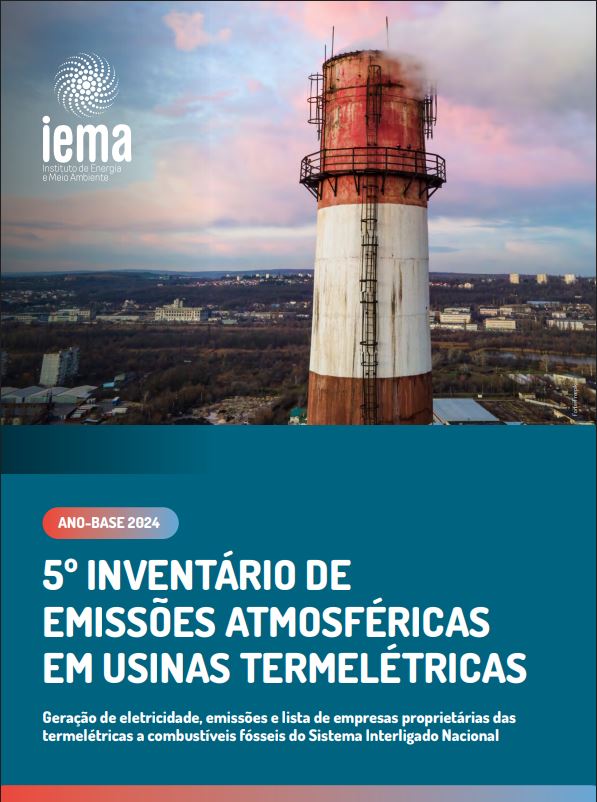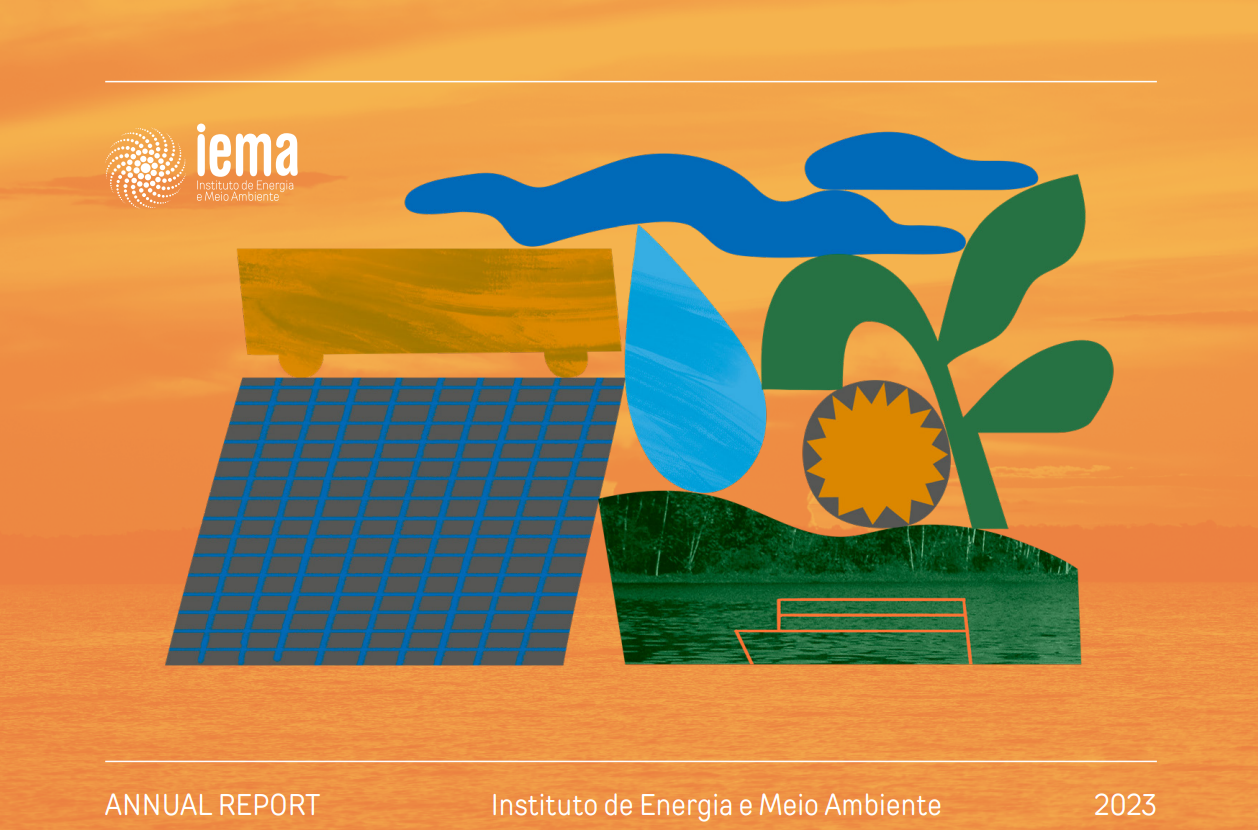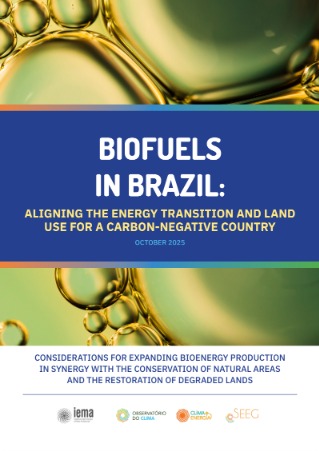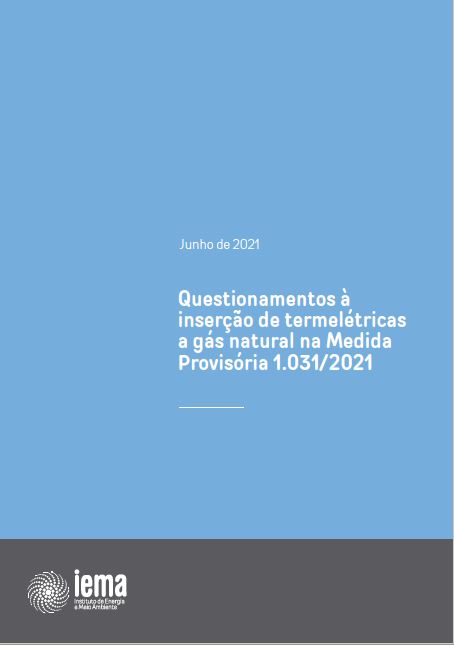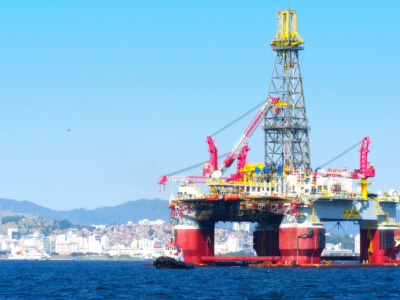The increase in greenhouse gas (GHG) emissions from Brazil’s energy sector will continue to be a major concern if thermal power plants remain the primary option for expanding energy generation in the country. According to the “Second Inventory of Atmospheric Emissions in Thermal Power Plants,” a study published by the Institute of Energy and Environment (IEMA) on Thursday (15th), GHG emissions in 2021 were 75% higher than those emitted by the fossil thermal power plant of the National Interconnected System in 2020. As a result, the share of fossil sources for energy generation in Brazil increased from 15% in 2020 to 20% in 2021. The 82 fossil fuel-fired plants listed in the study emitted 55.6 million tons of carbon dioxide equivalent (CO2e). Read the full study.
“The growth in emissions was high due to the 2021 water crisis, which affected hydroelectric generation and caused the Brazilian energy sector to activate even more emitting thermal power plants,” says Raissa Gomes, one of the study’s authors. “In 2020, emissions were lower: 31.7 million tons of CO2e.”
“Regardless of water crises, the increase in emissions is a trend that should continue, as more and more thermal power plants enter the Brazilian energy matrix,” warns Felipe Barcellos e Silva, also an author of the study.
The current study focuses on public service and self-generating thermal power plants – attached to industries to essentially supply their own electricity demands – that provided energy to the National Interconnected System (SIN) in 2020 and 2021. Plants powered by renewable fuels and units for which it was not possible to identify the fuels used were excluded. In total, 95.8 TWh of electricity was generated, of which 68.9 TWh were produced from natural gas (44 plants), corresponding to 72% of the total.
Coal, with eight plants, was the second highest contributor, responsible for generating 16.5 TWh, which represents 17% of fossil fuel energy production. Fuel oil and diesel oil, petroleum derivatives, had a 9% and 2% share, respectively, with 18 and 11 plants each. Only one plant used refinery gas as the main fuel, with a very low share compared to the total inventory.
According to Helen Sousa, who is also an author of the study, the capacity factor, or how much a power plant remains operational in a year, was approximately 31% in 2020. The average is now around 50%, which means that power plants have been switched on for longer periods, in general.
In addition to the challenge of managing the water crisis, which must be properly anticipated and managed to minimize the activation of thermal power plants and the problems that result from their generation, the outgoing federal government encouraged and formalized the hiring of full-time thermal power plants. This was not just a way to replace the activation of hydroelectric plants during times of crisis and low water reservoirs. As previously mentioned, the year 2021 saw a significant increase in greenhouse gas emissions in the Brazilian energy sector. In addition to environmental problems, the increased use of fossil fuel thermal power plants may lead to higher electric bills, as these projects are more expensive to operate than renewable energy sources.
While the scenario described may be considered an isolated incident that reflects a theoretically atypical moment in hydroelectric generation, the use of fossil thermal power has consistently increased over the years, particularly from the 2010s onward. However, it is possible to expand energy generation in Brazil without inaugurating new thermal power plants. Proper management of natural resources and the various renewable sources available is necessary for this goal.
It’s important to note that developing an inventory of emissions from polluting sources in Brazil remains a significant challenge. “Most companies do not facilitate public access to reliable environmental information, and the government lacks the technical, instrumental, and political conditions necessary to do so. In the case of this inventory of thermal power plants, the IEMA team’s considerable effort in collecting data to ensure its viability with the necessary quality shows that there is still a long way to go. This applies to both the effective environmental management by the government and the implementation of transparent and consistent Environmental, Social, and Corporate Governance (ESG) practices by companies in the electricity sector”, emphazises André Luis Ferreira, CEO of IEMA.
Below, the information is summarized by thermoelectric plants, shareholders, and locations.
Thermal power plants with the highest emissions
Only 13 power plants emitted almost half (51%) of the greenhouse gases (GHG), eight of them powered by coal as the main fuel and the other five by natural gas. The most emitting ones (in absolute emissions) are: Porto do Pecém I (CE), Candiota III (RS), Termorio (RJ), Termomacaé (RJ), Norte Fluminense (RJ), Jorge Lacerda III (SC), Pampa Sul (RS), Porto do Pecém II (CE), Mauá 3 (AM), Porto do Itaqui (MA), Porto de Sergipe I (SE), Jorge Lacerda I and II (SC), Jorge Lacerda IV (SC).
Ninety percent of the CO2e emissions came from just 41 plants, which represent half of the fossil fuel power plants in SIN. The Porto do Pecém I power plant in CE ranked as the largest emitter in the country in 2021. It is powered by coal, a fuel that emits high levels of greenhouse gases, and doubled its generation compared to 2020. Although, it accounted for only 4% of the total energy produced by thermal power plants, as the sixth in terms of energy generated.
The ten Brazilian thermal power plants with the highest greenhouse gas emissions per GWh produced are: Candiota III (RS), Pampa Sul (RS), Jorge Lacerda I and II (SC), Jorge Lacerda III (SC), Porto do Pecém I (CE), Jorge Lacerda IV (SC), Porto do Itaqui (MA), Porto do Pecém II (CE), Arembepe (BA) and Global II (BA). It’s worth noting that only the last two are fueled by fuel oil and not coal like the others.
Energy Generating Companies
Although there are 51 generating companies, only six of them are responsible for almost 70% of all fossil generation: Petrobras (30.3%), Eneva (12.8%), Eletrobras (9.6%), Électricité de France – EDF (6.8%), Fram Capital Energy (5.0%), and EDP Energias do Brasil (4.0%). As a result, the large generating power plants are concentrated in a few companies.
In 2021, only four companies were responsible for 61% of GHG emissions: Petrobras (26.1%), Eneva (13.9%), Eletrobras (11.8%), and Fram Capital Energy (8.8%). The rest of the top ten emitters were EDP (6.3%), Électricité de France – EDF (4.5%), Engie (3.2%), Global (2.6%), Vulcan (2.2%), and Neoenergia (2.2%). Collectively, these ten companies accounted for 82% of the emissions, which amounts to 45.4 million tons of greenhouse gases released.
However, in 2021, the company that emitted the most greenhouse gases per unit of energy generated was Engie, with 1,140 tCO2e/GWh. This is almost double the SIN average of 582 tCO2e/GWh. The reason for this is that Engie, despite having sold the coal-fired power plants of the Jorge Lacerda Complex to Fram Capital Energy, remained the sole owner of 100% of the shares of Pampa Sul, which is a coal-fired power plant with the second-highest inventory emission rate.
The list of companies with the highest emission rates, from highest to lowest, is: Engie Brasil Energia S.A., Fram Capital Energy, EDP Energias do Brasil S.A., Centrais Elétricas Brasileiras S.A. – Eletrobras, Global Participações em Energia S.A., JRLC Participações Ltda., WVMC Participações Ltda., Aruana Energia S.A., CPFL Energia, and OZ&M Incorporação Participação Ltda.
In comparison, Petrobras, despite being the largest emitter in absolute terms in 2021, presented an emission rate of 468 tCO2e/GWh, which is 20% lower than the average of fossil fuel thermal power plants in the SIN. This is because many of the plants controlled by Petrobras employ technologies that achieve higher energy efficiencies.
States and Cities
Sobre os estados mais geradores, o Rio de Janeiro se destaca por ter produzido sozinho 28% de toda geração termelétrica fóssil ligada ao SIN, tendo gerado 27,0 TWh – o dobro do produzido por esse estado em 2020.
Regarding the states with the highest power generation, Rio de Janeiro stands out. It alone produced 28% of all fossil thermal power generation linked to the SIN, having generated 27.0 TWh. This is twice as much as the state produced in 2020.
The five cities with the highest emissions, which together accounted for 41% of total generation, were: Macaé (RJ), Santo Antônio dos Lopes (MA), Manaus (AM), São Gonçalo do Amarante (CE), and Duque de Caxias (RJ). In total, fossil thermal generation, injected into the SIN, was produced in 49 cities.
